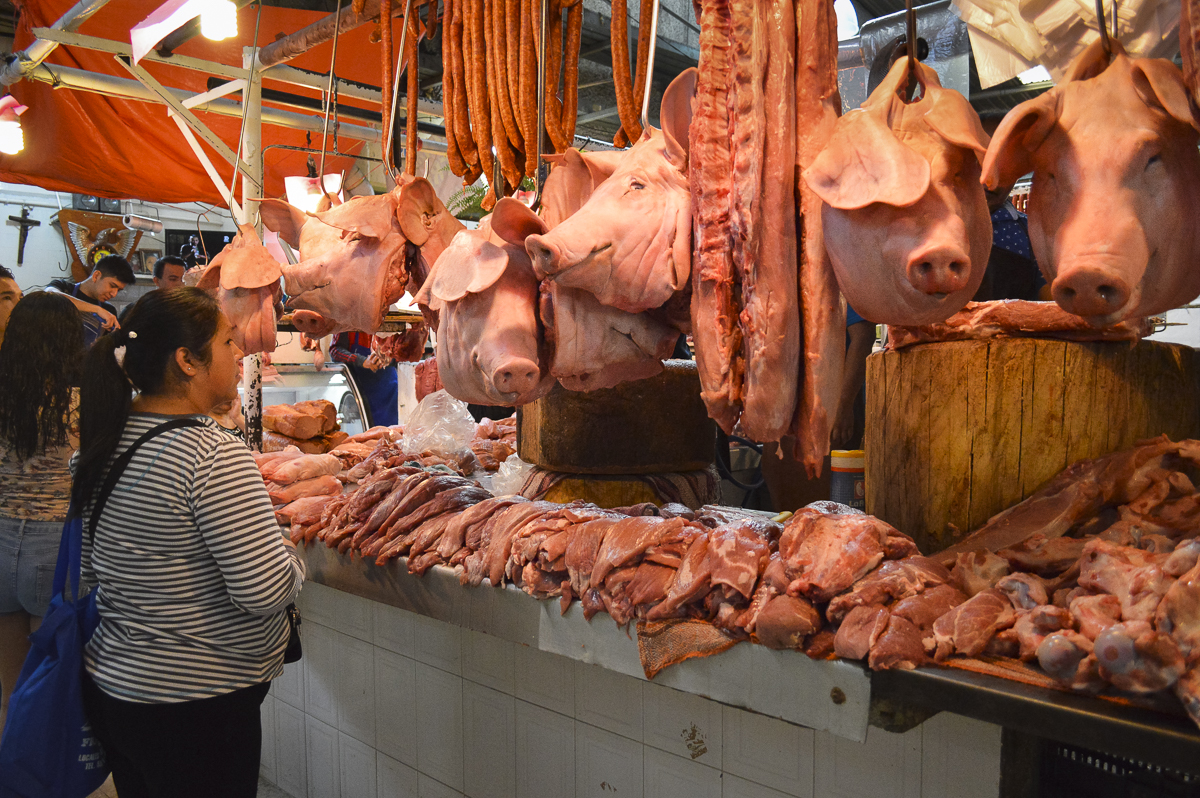Discover Fresh Cuts at Bagley Farms Meat Market Edwardsville IL for Your Following barbeque
Discover Fresh Cuts at Bagley Farms Meat Market Edwardsville IL for Your Following barbeque
Blog Article
Discover the Art of the Butcher's Cut in a Modern Meat Market
In the ever-evolving landscape of modern-day meat markets, the butcher's cut has transcended its standard origins, combining olden workmanship with contemporary techniques. What absolutely sets the modern butcher apart is their ability to create a deeper link between consumers and the origins of their meat.
Development of Butchery Strategies

The mid-20th century saw butchery techniques additionally refined by clinical understandings into muscle mass biology and meat aging, enhancing both tenderness and taste. Developments like vacuum cleaner packaging and refrigeration prolonged item shelf-life, enabling butchers to branch out offerings and improve quality assurance. This duration additionally marked the surge of customized devices, such as band saws and meat slicers, which increased precision and efficiency in meat handling.
Computerized systems now aid in tracking animal provenance and enhancing cuts to satisfy particular client preferences. In addition, a renewal in artisanal butchery has actually arised, blending conventional abilities with modern-day understanding to provide to customers seeking ethical and sustainable meat options.

Understanding Meat Cuts

Recognizing the complexities of meat cuts is crucial for both butchers and customers looking for top quality and value. For butchers, specific cuts mirror skill and regard for the craft, making sure very little waste and ideal return.
The primary categories of meat cuts consist of primitive, sub-primal, and retail cuts. Primal cuts, such as the loin, rib, and chuck, are the huge areas originally separated from the carcass. Butchers then break these down additionally right into sub-primal cuts, prior to lastly producing retail cuts offered to consumers, like ribeye or tenderloin. Each stage needs cautious interest to anatomical framework and muscle mass composition.
Comprehending muscular tissue make-up is important; muscles utilized extra regularly by the pet often tend to be tougher and are best fit for slow food preparation techniques, while less-used muscle mass, like those found in the loin, are extra tender and suitable for grilling or roasting. Familiarity with these distinctions equips consumers to make educated choices, improving their cooking ventures.
Selecting Top Quality Meat
Choosing the best meat entails more than just selecting a visually enticing piece from the screen. The art of choosing quality meat requires a critical eye and knowledge of particular qualities that symbolize freshness and excellence.
Second of all, take into consideration the marbling, which refers to the white streaks of fat within the muscular tissue. Proper marbling is a crucial indication of inflammation and flavor, as it melts throughout cooking, boosting the meat's juiciness. Keep in mind, higher marbling typically associates with superior quality cuts, such as USDA Prime.
Appearance is one more essential factor; meat needs to really feel solid to the touch, not slimed or extremely soft. In addition, be conscious of the aroma. Fresh meat ought to have a clean, neutral scent, without any type of sour or off-putting odors.
Matching Cuts With Food Preparation Approaches
Efficiently combining cuts of meat with the proper food preparation approaches is necessary for achieving optimal taste and texture. Different cuts vary in tenderness, marbling, and connective cells material, each calling for specific strategies to open their use this link capacity. Tender cuts like filet mignon and ribeye, with their fundamental marbling, benefit from high-heat, quick-cooking techniques such as barbecuing or pan-searing. These approaches improve the meat's natural flavors and ensure a juicy coating.
Conversely, harder cuts like brisket and chuck roast are abundant in collagen, which damages down right into gelatin when cooked slowly. These cuts are suitable for braising or slow roasting, permitting the meat to soften with time and establish deep, intricate flavors. Cuts such as short ribs and pork shoulder get on well with slow-cooking approaches, where expanded cooking times change their robust textures into succulent recipes.
Lamb shanks and the original source oxtail, which need extended food preparation to soften, are perfect prospects for cooking or slow simmering. These techniques coax out abundant, passionate flavors while preserving moisture. By comprehending the distinct qualities of each cut, chefs and home cooks alike can boost their cooking productions, ensuring each recipe is both pleasing and unforgettable.
The Butcher's Function Today
Navigating the evolving landscape of the modern-day meat market, the butcher's role today expands past plain preparation of cuts. Contemporary butchers are culinary artisans, educators, and advocates for sustainable practices.
Along with crafting specific cuts, butchers now involve directly with clients, supplying cooking suggestions and tailoring selections to fit private requirements and preferences. Their competence in meat aging, marbling, and taste profiles equips customers to make enlightened decisions, enhancing their cooking experiences. This customized solution exhibits the butcher's developing function as a relied on consultant in the cooking area.
Moreover, butchers are pivotal in reducing waste, using whole animals to produce varied items such as sausages and stocks - bagley farms meat market edwardsville il. This thorough strategy not only appreciates the animal but likewise straightens with modern sustainability objectives. This way, the modern butcher embodies both custom and development, adjusting to an ever-changing market while protecting the creativity and stability of their craft

Final Thought
Proficiency in understanding varied meat cuts and top quality indications equips butchers to offer informed recommendations, aligning why not find out more details cuts with optimal food preparation approaches. By honoring historic methods while embracing modern needs, the butcher's function stays essential in today's advanced meat market.
Report this page